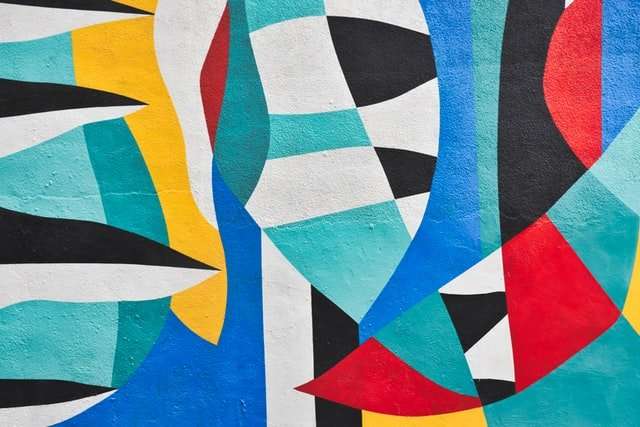Postmodern art is a term for art that is self-aware about its own structure, such as the way it uses color or form. It is a reaction to modernism, a term used to describe art that is unstructured and often abstract. Postmodern art has been around since the late 1960’s but has only recently become really popular.
Tate Modern in London, which opened in 2000, has several collections of postmodern art. Their collection includes pieces by artists such as Salvador Dali and Andy Warhol. Their collection also features some pieces from the famous Guerrilla Girls, a feminist group that focuses on gender equality in the arts.
The Tate Modern also hosts several other locations all over London, including one in St. Ives and one in Liverpool. These locations feature regular exhibits as well as special exhibits that are usually displayed at Tate Modern in London as part of their rotation schedule.
Postmodern art may be hard to understand and appreciate, but it can be fun to look at even if you don’t “get” it. Here are 5 modern takes on the postmodern movement:
Art is a form of communication, and post-modernism can be considered to be the first artistic movement that was international. It became popular in the late 1960s, and it was characterized by anti-formalist attitudes, irony and pastiche.
Post-modern art can be seen as the “death of painting” in the sense that it is exhausted of all the possibilities to develop further. Another way of looking at it is to see post-modernism as a period in which artists were forced to look for new ways of expression.
Artists have used many different means in order to convey their message, but there are some modern takes on this particular type of art:
1. Appropriation Art
In this form of art, artists use images that have been taken from existing works – mainly from commercial products such as advertisements, comics or drawings – and modify them slightly in order to transmit a new message. This technique has been used by many artists including Jeff Koons, Andy Warhol and Richard Prince. The message conveyed changes according to its context and can have a positive or negative impact on viewers.
2. Collage Art
This technique involves taking various images from different sources and placing them together (without any apparent connection between them) into one canvas or
Painted in 1982 by an artist named Larry Rivers, this piece is one of the first examples of the very modern and postmodern art movement that has influenced many artists in their work ever since.
And although this specific example might be a bit hard to grasp at first, you will surely have come across other works by famous postmodern artists. Another great example is the famous Andy Warhol’s Campbell’s Soup Cans painting which depicts nothing but a number of soup cans.
And there are many other great examples of postmodernism in art than those two above mentioned, some of which will be featured here today. So, let’s get started!
1. The Political Influence
The postmodern art movement is politically influenced by the cutting-edge art which uses media in the expression. It is because of the World War I, artists were influenced by the war and how they were living in that time. They think that they are living in a world of chaos as well as destruction, but they can turn it into something good and have meaning in their lives and artwork. They use media as their way to express their feelings and experiences about the modern world.
The artist uses the media to create a new and different view about reality, what people usually see is fake, shallow, lies and deception from the government, society, public relations and advertisements. The artist wants to break away from these views and create a new world where truth is revealed about everything in this world. The artist’s goal for doing this is to show people things that are not usually seen or heard by ordinary people to make them realize how fake our society is.
The artist also wants to remind us that we need to be aware of social issues around us such as racism or gender discrimination since it was still prominent during those times. Also, they want to attack the conservative values that are still prevalent during those times.
So despite of being criticized by some people
The postmodern art was developed in the late 60’s and early 70’s, becoming probably the biggest artistic movement of the 20th century. The word “postmodern” is an adjective that describes characteristics of an era after modernism. It is not a style itself, but rather its meaning includes several styles.
The beginning of Postmodernism is considered to be the end of World War II. Many artists began to question not only their own works, but also the artistic language as a whole. They were trying to find new ways to express themselves and their ideas.
Dadaists and Surrealists were among precursors of Postmodernism. They used collage, montage, ready-made objects and other techniques that became a part of this movement. Also they created works that were full of paradoxes and ironies. And they criticized art, which means that they were very influential for development of Postmodernism.*
The term “Postmodernism” was coined in the year of 1925 by the French philosopher Jean-François Lyotard.
Post-modernism is the state of questioning everything and making a broad attack on many areas of life, claiming that all truth is subjective. The movement started as an art movement, and later spread to literature, music and architecture.
In this article you will find some of the most influential artworks in postmodernism and their meaning.
In a postmodern era, the art world has become less about the artist and more about the art itself. The rise of “conceptual” art in the 1960s ushered in an age of anti-art that is typified by artists such as Marcel Duchamp, who placed ordinary objects like a urinal in a gallery setting in order to “desacralize” the work of art.
Tate Modern is a museum in London dedicated to conceptual and modern art, housing the largest collection of international modern and contemporary art in the world. It is part of the Tate network of galleries and comprises four galleries: Tate Modern, Tate Britain, Tate Liverpool, and Tate St Ives.
Famous works at Tate Modern include The Lights Going On and Off by Ugo Rondinone, a massive light installation; Inevitable Deviation by Marcus Coates which features an enormous pair of shoes that appear to be growing out of the floor; and Ryoji Ikeda’s immersive sound installation Sonic Boom.
Visit the gallery’s website for more information about upcoming exhibitions and events.**


